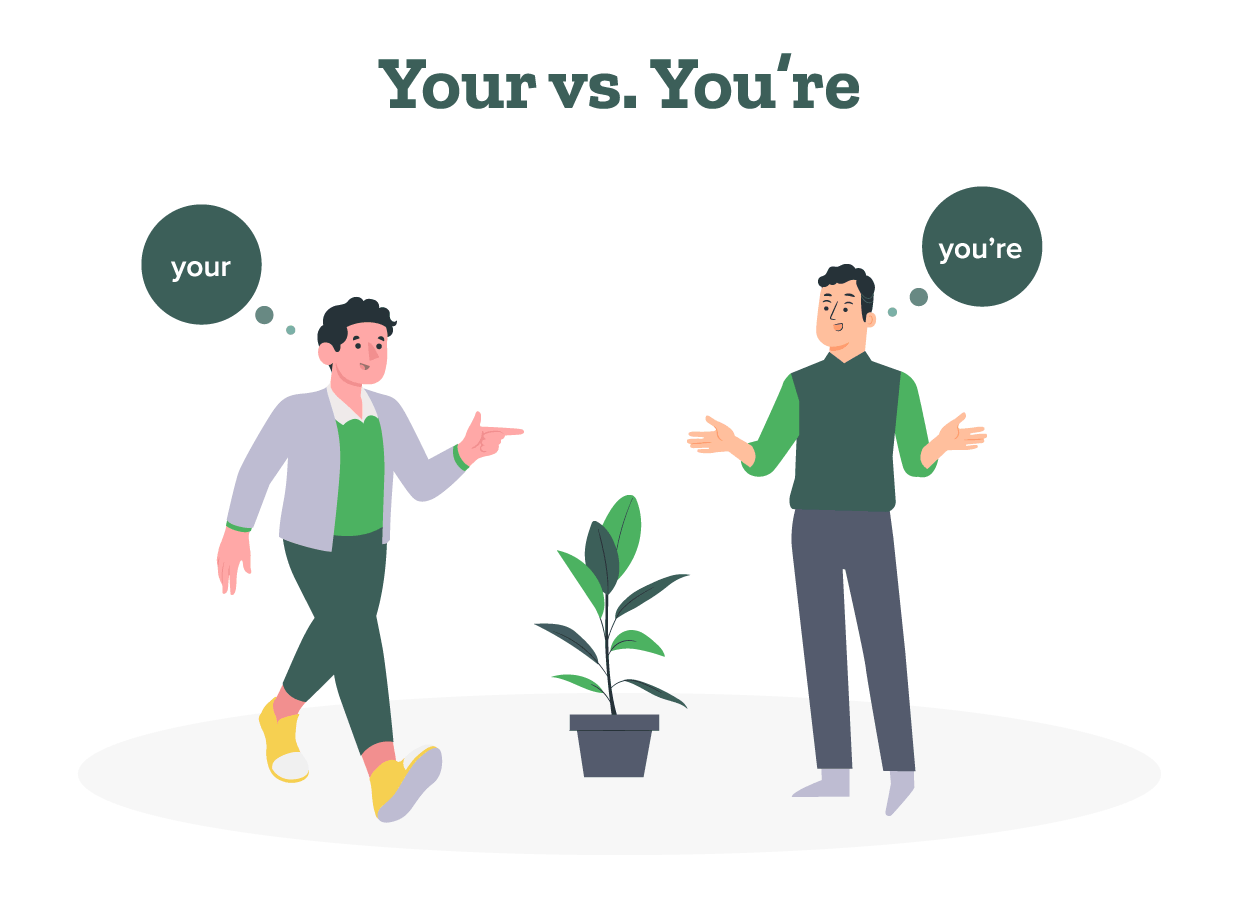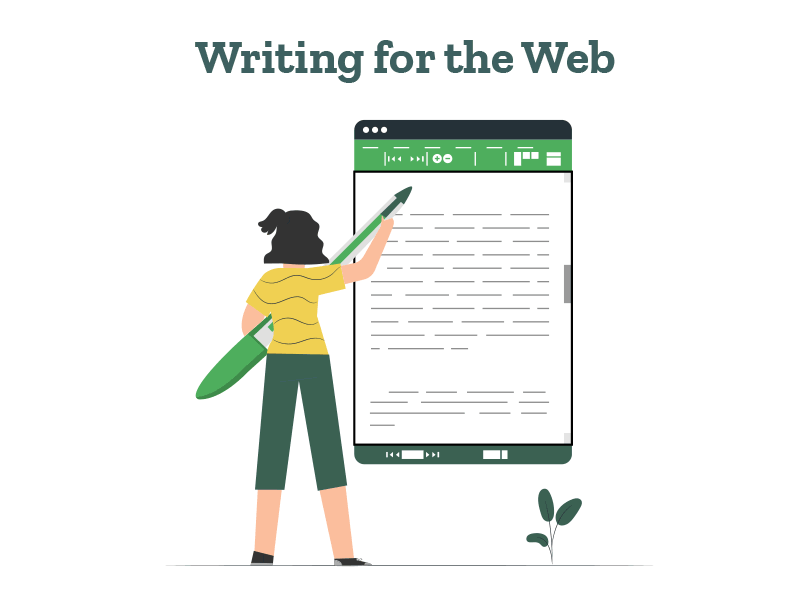- Tips to Self-Edit Your Dissertation
- Guide to Essay Editing: Methods, Tips, & Examples
- Journal Article Proofreading: Process, Cost, & Checklist
- The A–Z of Dissertation Editing: Standard Rates & Involved Steps
- Research Paper Editing | Guide to a Perfect Research Paper
- Dissertation Proofreading | Definition & Standard Rates
- Thesis Proofreading | Definition, Importance & Standard Pricing
- Research Paper Proofreading | Definition & Standard Rates
- Essay Proofreading | Options, Cost & Checklist
- Top 10 Paper Editing Services of 2024 (Costs & Features)
- Top 10 Essay Checkers in 2024 (Free & Paid)
- Top 10 English Correctors to Perfect Your Text in 2024
- 10 Advanced AI Text Editors to Transform Writing in 2024
- Personal Statement Editing Services: Craft a Winning Essay
- College Essay Review: A Step-by-Step Guide (With Examples)
- Top 10 College Essay Review Services: Pricing and Benefits
- How to Edit a College Admission Essay (8-Step Guide)
- Improve Academic Writing: Types, Tips, Examples, Services
- How to Use AI to Write Research Papers: A Step-by-Step Guide
- How to Write an Assignment: A Step-by-Step Guide for Students
- AI Proofreading Services: Meaning, Benefits & Best Tools
- 10 Best Proofreading Services Online for All in 2025
- Top 10 Recommendation Letter Editing Services | Best Picks
- How to Format an Appendix: APA and MLA
- Top 10 Online Thesis Editing and Proofreading Services
- What is Academic Editing? Meaning, Types & Importance
- Top 10 AI Proofreaders to Perfect Your Writing in 2025
- What Is a Thesis: How to Write a Thesis with Examples
- Top 10 Academic Proofreading Services (2025 Update)
- Research Paper Outline: Free Templates & Examples to Guide You
- How to Write a Research Paper: A Step-by-Step Guide
- How to Write a Lab Report: Examples from Academic Editors
- Research Methodology Guide: Writing Tips, Types, & Examples
- The 10 Best Essential Resources for Academic Research
- 100+ Useful ChatGPT Prompts for Thesis Writing in 2024
- Best ChatGPT Prompts for Academic Writing (100+ Prompts!)
- Sampling Methods Guide: Types, Strategies, and Examples
- Independent vs. Dependent Variables | Meaning & Examples
- Understanding Verbatim Plagiarism: Copy, Paste, Regret
- What Is a Journal Article and How to Write a Journal Article
- How to Use AI to Write Research Papers: A Step-by-Step Guide
- Top 10 AI Tools for Research in 2025 (Fast & Efficient!)
- What Is a Research Proposal: A Detailed Guide
- How to Format an Appendix: APA and MLA
- What Is an Appendix In a Paper?
- Types of Journals in Research and Their Features
- Difference Between Paper Editing and Peer Review
- How to Handle Journal Rejection: Essential Tips
- Editing and Proofreading Academic Papers: A Short Guide
- How to Carry Out Secondary Research
- The Results Section of a Dissertation
- Final Checklist: Is My Article Ready for Submitting to Journals?
- Types of Research Articles to Boost Your Research Profile
- How does LaTeX based proofreading work?
- How to Improve Your Scientific Writing: A Short Guide
- Chicago Title, Cover Page & Body | Paper Format Guidelines
- How to Write a Thesis Statement: Examples & Tips
- Chicago Style Citation: Quick Guide & Examples
- Research Paper Outline: Free Templates & Examples to Guide You
- The A-Z Of Publishing Your Article in A Journal
- What is Journal Article Editing? 3 Reasons You Need It
- How to Cite a Book in APA Style | Format & Examples
- How to Start a Research Paper | Step-by-step Guide
- APA Citations Made Easy with Our Concise Guide for 2024
- A Step-by-Step Guide to APA Formatting Style (7th Edition)
- Academic Writing in 2024: 5 Key Dos & Don’ts + Examples
- How to Write a Lab Report: Examples from Academic Editors
- What Are the Standard Book Sizes for Publishing Your Book?
- MLA Works Cited Page: Quick Tips & Examples
- 2024’s Top 10 Thesis Statement Generators (Free Included!)
- Top 10 Title Page Generators for Students in 2024
- What Is an Open Access Journal? 10 Myths Busted!
- Primary vs. Secondary Sources: Definition, Types & Examples
- How To Write a College Admissions Essay That Stands Out
- APA Journal Citation: 7 Types, In-Text Rules, & Examples
- What Is Predatory Publishing and How to Avoid It!
- Independent vs. Dependent Variables | Meaning & Examples
- How to Write a Strong Dissertation & Thesis Introduction
- How to Cite a Book in MLA Format (9th Edition)
- How to Cite a Website in MLA Format | 9th Edition Rules
- 10 Best AI Conclusion Generators (Features & Pricing)
- Top 10 Academic Editing Services of 2024 [with Pricing]
- How to Create the Perfect Thesis Title Page in 2024
- What Is Accidental Plagiarism & 9 Prevention Strategies
- What Is Self-Plagiarism? (+ 7 Prevention Strategies!)
- Understanding Verbatim Plagiarism: Copy, Paste, Regret
- Improve Academic Writing: Types, Tips, Examples, Services
- What Is a Journal Article and How to Write a Journal Article
- What Is Paraphrasing Plagiarism and How to Avoid It
- What Is Expository Writing? Types, Examples, & 10 Tips
- Academic Research Ethics & Rules Simplified for All
- Complete Guide to MLA 9th Format
- Top 10 Online Dissertation Editing Services of 2025
- How to Write a Dissertation & Thesis Conclusion (+ Examples)
- What Is a Peer Review & 8 Types of Peer Review Processes
- 50 Best Essay Prompts for College Students in 2025
- What Is an Annotated Bibliography & Writing One Using AI
- What Is an Appendix In a Paper?
- Types of Journals in Research and Their Features
- 5 Effective Personal Statement Examples & Templates
- 100+ Writing Prompts for College Students (10+ Categories!)
- What Is a Thesis: How to Write a Thesis with Examples
- What Is Plagiarism? Meaning, Types & Examples
- Preventing Plagiarism in Your Thesis: Tips & Best Practices
- Final Submission Checklist | Dissertation & Thesis
- 7 Useful MS Word Formatting Tips for Dissertation Writing
- How to Write a MEAL Paragraph: Writing Plan Explained in Detail
- How does LaTeX based proofreading work?
- Em Dash vs. En Dash vs. Hyphen: When to Use Which
- 2024’s Top 10 Self-Help Books for Better Living
- Top 10 Paper Editing Services of 2024 (Costs & Features)
- 100+ Useful ChatGPT Prompts for Thesis Writing in 2024
- Best ChatGPT Prompts for Academic Writing (100+ Prompts!)
- MLA Works Cited Page: Quick Tips & Examples
- 2024’s Top 10 Thesis Statement Generators (Free Included!)
- Top 10 Title Page Generators for Students in 2024
- 10 Advanced AI Text Editors to Transform Writing in 2024
- Top 10 Academic Editing Services of 2024 [with Pricing]
- Know Everything About How to Make an Audiobook
- How to Create the Perfect Thesis Title Page in 2024
- Mastering Metaphors: Definition, Types, and Examples
- 10 Best Paid & Free Citation Generators (Features & Costs)
- The 10 Best Free Character and Word Counters of 2025
- What Is an Annotated Bibliography & Writing One Using AI
- Top 10 AI Proofreaders to Perfect Your Writing in 2025
- What Is Plagiarism? Meaning, Types & Examples
- Top 10 Academic Proofreading Services (2025 Update)
- Citing References: APA, MLA, and Chicago
- How to Cite Sources in the MLA Format
- MLA Citation Examples: Cite Essays, Websites, Movies & More
- Chicago Title, Cover Page & Body | Paper Format Guidelines
- Chicago Style Citation: Quick Guide & Examples
- Citations and References: What Are They and Why They Matter
- APA Headings & Subheadings | Formatting Guidelines & Examples
- Formatting an APA Reference Page | Template & Examples
- How to Create an MLA Title Page | Format, Steps, & Examples
- How to Create an MLA Header | Format Guidelines & Examples
- MLA Annotated Bibliography | Guidelines and Examples
- APA Website Citation (7th Edition) Guide | Format & Examples
- APA Citations Made Easy with Our Concise Guide for 2024
- APA Citation Examples: The Bible, TED Talk, PPT & More
- APA Header Format: 5 Steps & Running Head Examples
- A Step-by-Step Guide to APA Formatting Style (7th Edition)
- How to Write an Abstract in MLA Format: Tips & Examples
- APA Journal Citation: 7 Types, In-Text Rules, & Examples
- 10 Best Free Plagiarism Checkers | Accurate & Reliable Tools
- How to Cite a Book in MLA Format (9th Edition)
- How to Cite a Website in MLA Format | 9th Edition Rules
- 10 Best Paid & Free Citation Generators (Features & Costs)
- Complete Guide to MLA 9th Format
- Research Paper Format: APA, MLA, & Chicago Style
- 5 Reasons Why It Is Important To Cite Your Sources
- APA Title Page Format Simplified | Examples + Free Template
- Writing a Dissertation Proposal
- The Acknowledgments Section of a Dissertation
- The Table of Contents Page of a Dissertation
- The Introduction Chapter of a Dissertation
- Tips to Self-Edit Your Dissertation
- The Results Section of a Dissertation
- Preventing Plagiarism in Your Thesis: Tips & Best Practices
- Final Submission Checklist | Dissertation & Thesis
- The Only Dissertation Toolkit You’ll Ever Need!
- 7 Useful MS Word Formatting Tips for Dissertation Writing
- 5 Thesis Writing Tips for Master Procrastinators
- The 5 Things to Look for in a Dissertation Editing Service
- Top 10 Dissertation Editing & Proofreading Services
- Why is it important to add references to your thesis?
- Thesis Editing | Definition, Scope & Standard Rates
- Expert Formatting Tips on MS Word for Dissertations
- A 7-Step Guide on How to Choose a Dissertation Topic
- 350 Best Dissertation Topic Ideas for All Streams in 2024
- A Guide on How to Write an Abstract for a Research Paper
- Dissertation Defense: What to Expect and How to Prepare
- Creating a Dissertation Title Page (Examples & Templates)
- Top 10 Online Dissertation Editing Services of 2025
- A Beginner’s Guide to How to Write a Dissertation in 2025
- What Is a Research Proposal: A Detailed Guide
- How to Write a Dissertation Literature Review: Tips and Structure
- What Is a Thesis: How to Write a Thesis with Examples
- Essential Research Tips for Essay Writing
- How to Write a MEAL Paragraph: Writing Plan Explained in Detail
- How to Write a Thesis Statement: Examples & Tips
- What Is a Mind Map? Free Mind Map Templates & Examples
- How to Write an Essay Outline: Free Template & Examples
- How to Write an Essay Header: MLA and APA Essay Headers
- How to Write an Essay: 8 Simple Steps with Examples
- Expository Essay: Structure, Tips, and Examples
- Guide to Essay Editing: Methods, Tips, & Examples
- Narrative Essays: Structure, Tips, and Examples
- How to Write an Argumentative Essay (Examples Included)
- How to Write a Conclusion for an Essay (Examples Included!)
- How to Write an Impactful Personal Statement (Examples Included)
- Literary Analysis Essay: 5 Steps to a Perfect Assignment
- How to Write a Compare and Contrast Essay: Tips & Examples
- Top 10 Essay Checkers in 2024 (Free & Paid)
- 100 Best College Essay Topics & How to Pick the Perfect One!
- College Essay Format: Tips, Examples, and Free Template
- 10 Best AI Essay Outline Generators of 2024
- Personal Statement Editing Services: Craft a Winning Essay
- College Essay Review: A Step-by-Step Guide (With Examples)
- Top 10 College Essay Review Services: Pricing and Benefits
- How to Write an Assignment: A Step-by-Step Guide for Students
- The Four Main Types of Essay | Quick Summary with Examples
- How to Write an Essay Introduction | 4 Examples & Steps
- Top 10 Free Essay Writing Tools for Students in 2025
- 10 Best AI Essay Writing Tools in 2025
- What Is an Essay? A Comprehensive Guide to Structure and Types
- How to Write a Descriptive Essay | Examples and Structure
- Structure of an Essay: 5 Tips to Write an Outstanding Essay
- Types of Introductions and Examples
- Top 10 Essay Editing Services of 2025
- The Best Essay Graders of 2025 That You Can Use for Free!
Still have questions? Leave a comment

Checklist: Dissertation Proposal
Enter your email id to get the downloadable right in your inbox!
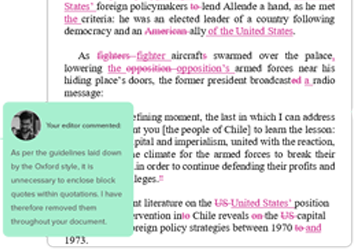
Examples: Edited Papers
Enter your email id to get the downloadable right in your inbox!
Need
Editing and
Proofreading Services?
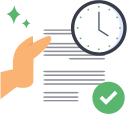
APA Citations Made Easy with Our Concise Guide for 2024
 Nov 11, 2023
Nov 11, 2023 8
min read
8
min read
Aside from formatting, an APA Style paper, thesis, or dissertation also features citations in the APA 7 format. The 7th edition of the APA Publication Manual lays down some guidelines you must follow in order to properly write your APA in-text citations and reference page.
We’ll tell you how to correctly write and format citations in the APA Style, but it’s your job to make them as accurate as possible. This establishes your credibility as a researcher and an author, so you should take your APA citations very seriously.
Plus, properly formatted citations help your reader focus on the content of your references. When the format is consistent, they can focus on the authors, articles, and web pages you have cited instead of the irregularity of years and page numbers in your in-text citations.
In this article, we’ll tell you how to write and format different types of sources for your APA internal citations as well as the citations list. We’re also including handy examples for each citation format to help you understand it better.
How to do APA in-text citations
An in-text citation or internal citation appears when you paraphrase or quote from an external source. So every time you use ideas from another paper, book, or website, you need to add an in-text citation. Conversely, for every APA in-text citation in your paper, there needs to be a corresponding entry in your reference list.
Under the APA Style format, in-text citations consist of the author’s last name and the year of publication. Here’s an example:
The proposed coal mine would have displaced more than 25,000 people (Iman, 2016).
In-text citations for multiple authors
If there are two writers for a source, separate their names with an ampersand. While citing multiple authors, use “et. al.” after the name of the first author.
One author: (Iman, 2016)
Two authors: (Iman & Roy, 2016)
Three or more authors: (Iman et. al., 2016)
Citing direct quotations
In the case of direct quotations from books or journal articles, you also need to include the page number. This is denoted by a “p.” which is followed by the page number.
The report found that “the proposed coal mine will displace more than 25,000 people” (Iman, 2016, p. 45).
If the quote extends to more than one page, add both pages in the citation. Replace “p.” with a “pp.” and add the page numbers with an en-dash between them. Here’s an example:
The report found that “the coal mine will spread over an area of 1300 hectares, displacing more than 10,000 people” (Iman, 2016, pp. 45–46).
Aside from parenthetical citations where the author’s name appears in parenthesis, you can also create a narrative citation. In this citation, the author’s name appears as part of the narrative text and the year of publication and page number appear in parentheses.
Iman found (2016) that “the coal mine will spread over an area of 1300 hectares, displacing more than 25,000 people” (pp.45–46).
While directly citing an entire paragraph or a block of text of more than 40 words, indent the quote and add the citation in parentheses at the end. Here’s an example:
The proposed coal mine in the Hasdeo forests spans a total area of 1300 hectares. It is home to more than 25,000 tribal residents, providing means of livelihood for 5,600 families. Over the next decade, the mine will also take over neighboring villages for waste disposal. (Iman, 2016, p. 45)
Paragraph number in in-text citations
If you’re referring to a source that doesn’t have page numbers like a blog, website, or ebook, you can add the paragraph number.
Iman found (2016) that the coal mine would displace more than 25,000 people (paras.4–5).
Group author
In case you’re citing an institution or group instead of an author, mention the full name in the first citation. In the following in-text citations, you can replace the group name with an abbreviation.
First citation: (Alliance of People’s Movements [APM], 2007)
Following citations: (APM, 2007)
Citing multiple sources
When you’re citing multiple sources in a single citation, separate them with a semicolon in your citation. Take a look at the following example:
The proposed coal mine would have displaced more than 25,000 people while also destroying a forest rich in biodiversity (Iman, 2016; APM, 2007).
How to do in-text citations under APA 7th edition
- Use the same spellings, years, and other details as the ones you’ve used on the reference page.
- In a parenthetical citation, write the author(s)’ name followed by the year of publication and page number(s).
- In a narrative citation, write the year of publication and page number in parentheses.
- Separate two authors with an ampersand “&”.
- In the case of multiple authors, write “et. al.” after the first author’s name.
- Denote a single page number with “p.” and multiple page numbers with “pp.”.
- Use an en-dash to separate page numbers in your citation.
- While citing online sources, use paragraph numbers denoted by “paras.”.
- Indent your block quotations and add a parenthetical citation after the period.
- Abbreviate institute names after the first citation.
- Separate multiple sources in your citation with a semicolon “;”.
APA 7 reference page
APA Style citation requires a reference page with entries that correspond to your internal citations. In an APA 7 citations list, each reference entry has four parts: author, date, title, and source.
These four elements answer your readers’ questions about the sources you cite. Whose work are you citing? When was it published? What is the title of this work? Where can one access it?
In order to answer these questions properly, your APA reference page must follow the proper citation format. This helps the reader access and understand your citations easily.
Basic guidelines for an APA reference page
- Write the author’s name first, followed by the year of publication, title, and source respectively.
- Alphabetize the entries based on the author’s last name.
- In the case of multiple works by the same author, add the earliest first, followed by the recent ones.
- Separate the four elements of the citation with periods.
- Use punctuation marks like commas or parentheses to separate parts of one citation element.
- Add a hanging indent to all entries.
- Invert all author names, so the last name appears before the first and second names.
- Add names of all authors up to 20 authors, separated by commas.
- Add an ampersand (&) before the name of the last author.
- In case of more than 20 authors, omit the remaining names. Put an ellipsis (…) between the 19th and 20th author names and don’t use an ampersand.
- Put the year of publication in parenthesis after the author’s name.
- Italicize the names of longer works like books or journals.
- In work titles, capitalize only the first word of title and subtitle, the first word after a colon or comma, and proper nouns.
- Italicize the punctuation marks within titles, but not the ones that separate reference elements from each other.
- Don’t put the titles of shorter works (like book chapters) within quotes.
- Don’t put a period after a DOI or website URL.
Here’s an example of an APA citation:
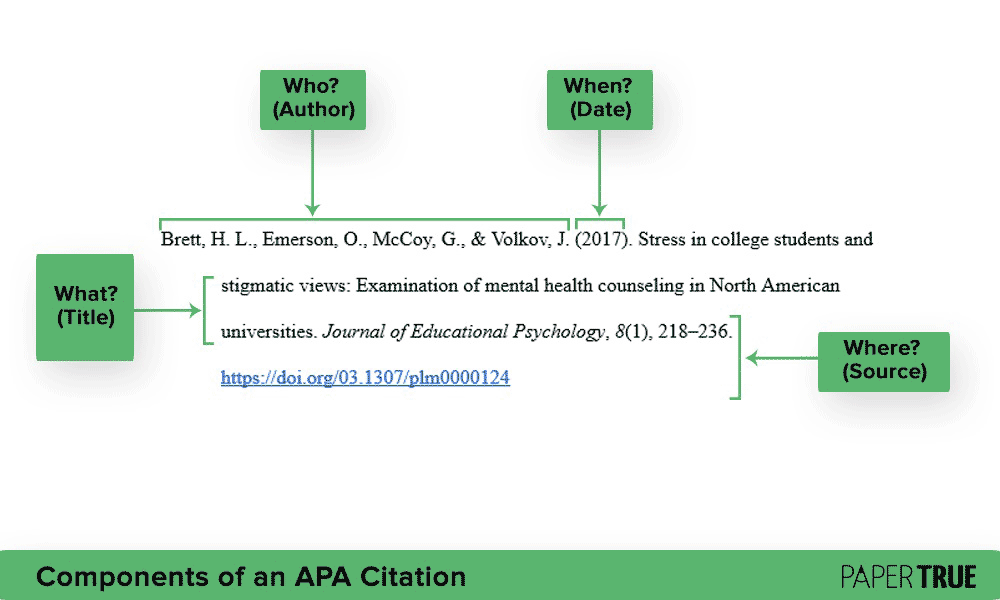
Journal citation under APA 7
Journal articles are the most commonly cited sources on any APA reference page. While including all details possible in your reference entry is desirable, this is not always possible. Some articles may not have an issue number or page number. In this case, you may omit these details from the reference.
Let’s go over the basics of journal citations under the APA style guide.
- Write the complete title of the journal article you’re citing.
- Capitalize only the first word of the title and subtitle, the first word after a colon or comma, and proper nouns.
- Italicize the title of the journal.
- Retain any non-standard spellings used by the journal.
- Don’t italicize or underline the title and don’t enclose it in quotation marks.
- Always include the issue number.
- Include the DOI in the reference if one is available.
- If the article has a URL instead of a DOI, insert it at the end of the reference.
Examples of journal article citation:
Iosua, S. L. (2017). Individual proximity, complex and coordinated collective movement. Journal of Comparative Psychology, 123(6), 126–134. https://doi.org/10.1167/com0000274
Chavez, O., & Garcia, G. (2009). Role of emotional intelligence in developing executive leadership. The Journal of Consulting Psychology, 59(3), 133-145. https://doi.org/10.1237/1094-8337.95.7.290
Book citation under APA 7
A similar citation format is used to cite print and digital books under the 7th edition of the APA style guide. The latest edition also states that digital books need not mention the format, platform, or device on which they are accessed.
Here are the basic guidelines for citing books in the APA 7 format:
- Use the book’s copyright year as the year of publication, even if the year of release is different.
- Mention the edition details in parenthesis after the title, without italicization.
- Don’t include the publisher’s location.
- If the book has a DOI, mention it after the publisher’s name.
- In case the book has a stable URL, include it in the reference.
- In case the book is taken from an academic database and has no DOI or URL, end the reference at the publisher’s name.
- Don’t name the database in either of the above cases.
Examples of APA citations for whole books:
Freeman, H. & Weber, K. (2019). Sociological research methods and best practices. Routledge.
Tanaka, L. M. (2020). Encyclopedia of nursing research (3rd ed.). Fawcett Publishing Company. https://doi.org/11.1037/0005608-893
Citing books with editors
In case the book’s principal contributors are editors and it has no authors, the editor’s names replace those of the authors. In a parenthesis, add “Ed.” or “Eds.” depending on the number of editors.
Here’s an example:
Freeman, H. & Weber, K. (Eds.) (2019). Sociological research methods and best practices. Routledge.
If the book has both authors and editors, this is how you should cite it:
Tanaka, L. M. (2020). Encyclopedia of nursing research (K. S. Williams, Ed.; 3rd ed.). Fawcett Publishing Company. https://doi.org/11.1037/0005608-893
Citing book chapters
Mention the chapter title before the book title without italicization. Don’t capitalize any words but the first word, the first word after a colon or dash, and proper nouns. Add the page numbers for the chapter in parentheses after the book title.
Here’s an example:
Freeman, H. & Weber, K. (Eds.) (2019). Limits of qualitative research. Sociological research methods and best practices (pp. 134–159). Routledge.
If you’re citing a chapter from an edited book, the names of the editors appear as part of the book title, preceding the title. Consider the following example:
Freeman, H. & Weber, K. (Eds.) (2019). Limits of qualitative research. In R. M. Kim & D. R. Wright (Eds.), Sociological research methods and best practices (pp. 134–159). Routledge.
How to cite a website in the APA format
Websites have become increasingly common in references. Accordingly, the 7th edition of the APA Publication Manual has revised its rules to make website citations less complicated.
Let’s go through the basics of website citation under APA 7:
- For webpages where individual authors are mentioned, use their names in the author section of the reference.
- Mention as specific a date as possible.
- If your specific source has an update date, use it in the reference.
- Italicize the title of the webpage.
- Mention the name of the website as the source.
- Add the URL at the end.
Examples of website citation:
Broderick, T. (2022, April 19). The student’s guide to managing stress in college. Best Colleges. https://www.bestcolleges.com/resources/balancing-stress/
While citing an online news article, the website title is not italicized. Instead, the title of the newspaper is written in italic title case as the source element.
Devereux, E. (2022, July 11). Poll shows rise in public support for nursing industrial action. Nursing Times. https://www.nursingtimes.net/news/workforce/poll-shows-rise-in-public-support-for-nursing-industrial-action-11-07-2022/
A similar rule exists for blog post citations. The web page title is written in sentence case while the blog title appears in italic title case.
Bachchhav, P. (2022, January 20). The top 5 dos & don’ts of academic writing. Resource Center – PaperTrue. https://www.papertrue.com/blog/the-top-5-dos-donts-of-academic-writing/
These guidelines and examples of APA citations are sure to help you write and format your references. But in case you need an academic editor to thoroughly proofread your APA Style paper, you know where to go!



